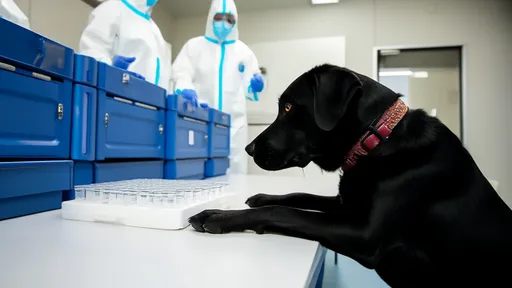The issue of stray animals has long been a pressing concern across the globe, with nations adopting varied legislative approaches to address the problem. Among these, Europe's mandatory microchipping policy stands out as a particularly effective and humane strategy. Unlike temporary measures such as shelters or culling, microchipping offers a sustainable solution by ensuring accountability and traceability. The policy has not only reduced the number of abandoned pets but also improved the overall welfare of animals across the continent.
Europe's approach to microchipping is rooted in a broader cultural shift toward animal rights and responsible ownership. Countries like Germany, the UK, and Sweden have implemented stringent laws requiring all pet owners to microchip their dogs and cats. The process involves implanting a tiny electronic chip under the animal's skin, containing a unique identification number linked to a national database. This system allows authorities to track lost or abandoned pets swiftly, reuniting them with their owners or facilitating their adoption into new homes.
The success of this policy lies in its dual focus on prevention and enforcement. By making microchipping compulsory, European nations have significantly reduced the incidence of pet abandonment. Owners who might otherwise discard their animals impulsively are deterred by the knowledge that they can be easily traced and held accountable. Moreover, the policy has streamlined the work of animal welfare organizations, enabling them to operate more efficiently by reducing the time and resources spent on identifying stray animals.
One of the most notable outcomes of Europe's microchipping mandate is the decline in euthanasia rates. In countries where shelters were once overcrowded with unidentifiable strays, the ability to trace an animal's origins has led to higher reunion and adoption rates. This not only alleviates the burden on shelters but also ensures that fewer animals face unnecessary euthanasia. The policy has also curbed illegal breeding practices, as microchipped pets are more likely to be spayed or neutered, reducing the population of unwanted litters.
Critics of the policy often argue that mandatory microchipping imposes an undue financial burden on pet owners. However, European governments have mitigated this concern by subsidizing the cost of the procedure or offering it for free through public health initiatives. In some regions, low-income households receive additional support to ensure compliance without hardship. This inclusive approach has been instrumental in achieving widespread adoption of the policy, making it a model for other nations grappling with similar issues.
The cultural acceptance of microchipping in Europe is another factor contributing to its success. Unlike in some regions where the practice is met with skepticism, Europeans largely view it as a standard aspect of responsible pet ownership. Public awareness campaigns have played a crucial role in normalizing the procedure, emphasizing its benefits for both animals and communities. Schools, veterinary clinics, and media outlets have collaborated to educate the public, fostering a collective sense of duty toward animal welfare.
Comparatively, nations without mandatory microchipping laws often struggle with higher rates of stray animals and lower accountability among pet owners. In the absence of a centralized identification system, shelters and rescue organizations face an uphill battle in managing the crisis. Europe's experience demonstrates that legislation, when paired with education and enforcement, can create a sustainable framework for addressing the issue. The policy's success has inspired other regions to consider similar measures, though implementation varies depending on local infrastructure and cultural attitudes.
Beyond its immediate benefits, Europe's microchipping policy has also set a precedent for broader animal welfare reforms. The data collected through microchipping has enabled researchers to study patterns in pet ownership and abandonment, informing future legislation. This evidence-based approach ensures that policies remain adaptive and responsive to emerging challenges. Additionally, the policy has strengthened the bond between veterinarians, government agencies, and animal welfare groups, fostering collaboration that extends beyond microchipping to other areas of animal care.
The long-term impact of Europe's mandatory microchipping policy is evident in the continent's declining stray population and improved animal welfare standards. While no single solution can entirely eradicate the problem of abandoned pets, the European model offers a proven framework for reducing its scale and severity. By prioritizing accountability, education, and accessibility, the policy has achieved what many others have failed to do: a lasting, humane solution to a complex societal issue.

By /Jul 7, 2025

By /Jul 7, 2025

By /Jul 7, 2025

By /Jul 7, 2025

By /Jul 7, 2025

By /Jul 7, 2025

By /Jul 7, 2025

By /Jul 7, 2025

By /Jul 7, 2025

By /Jul 7, 2025

By /Jul 7, 2025

By /Jul 7, 2025

By /Jul 7, 2025

By /Jul 7, 2025

By /Jul 7, 2025

By /Jul 7, 2025

By /Jul 7, 2025

By /Jul 7, 2025